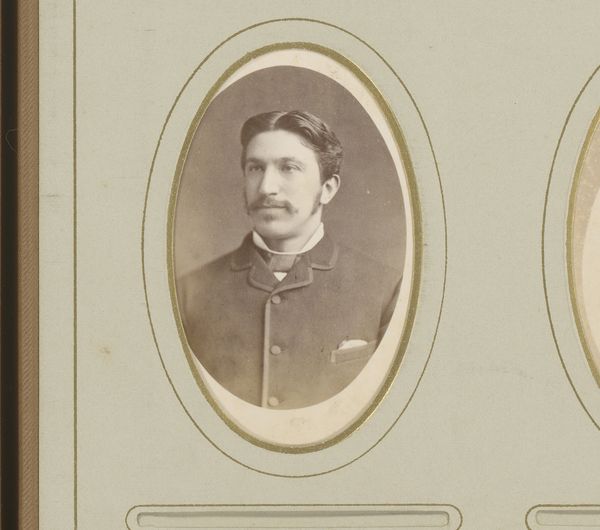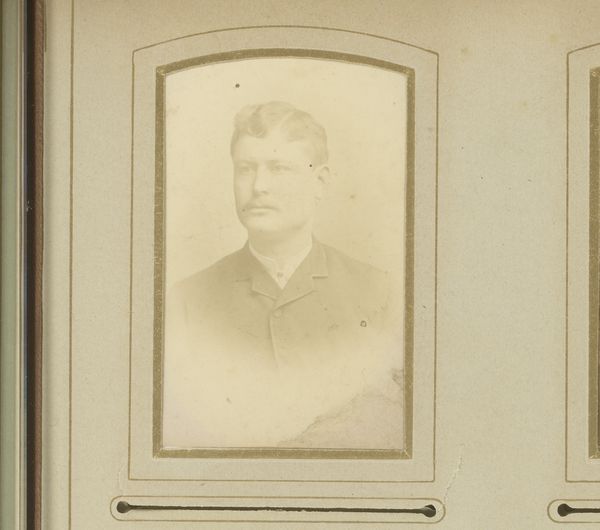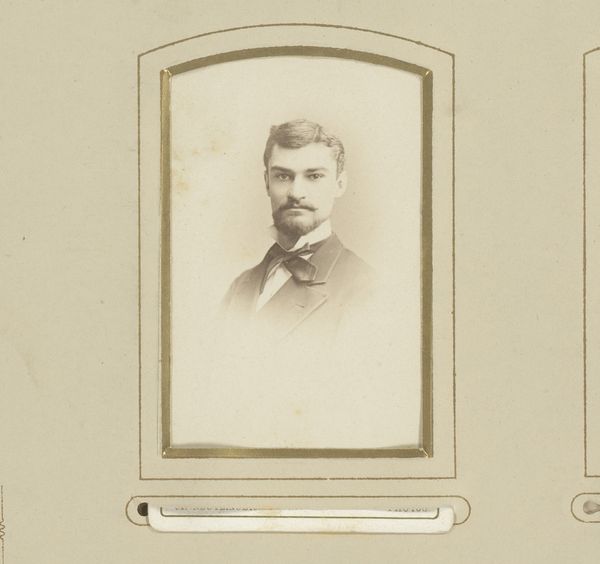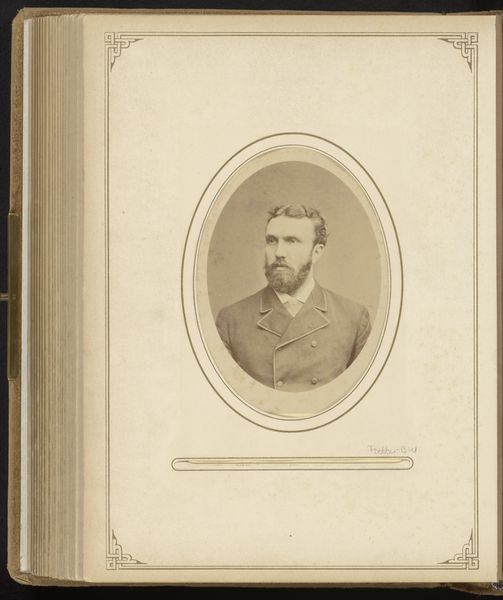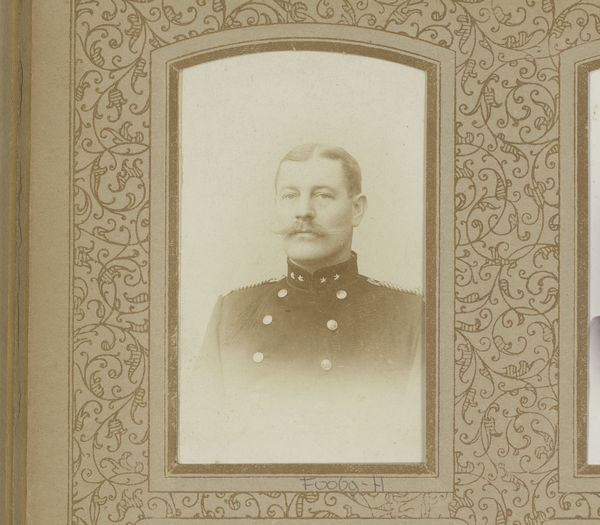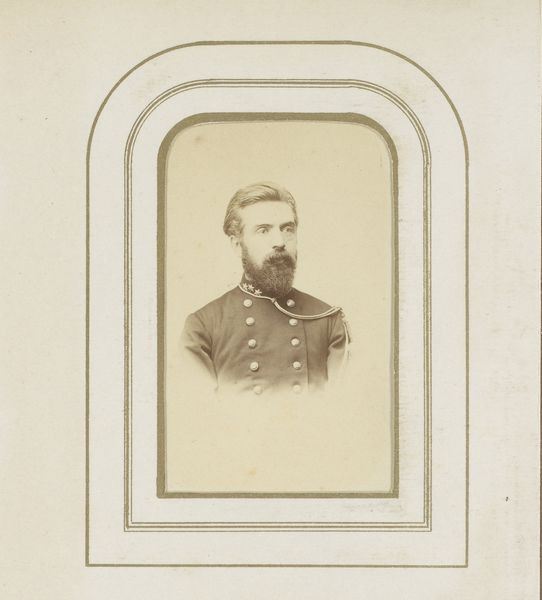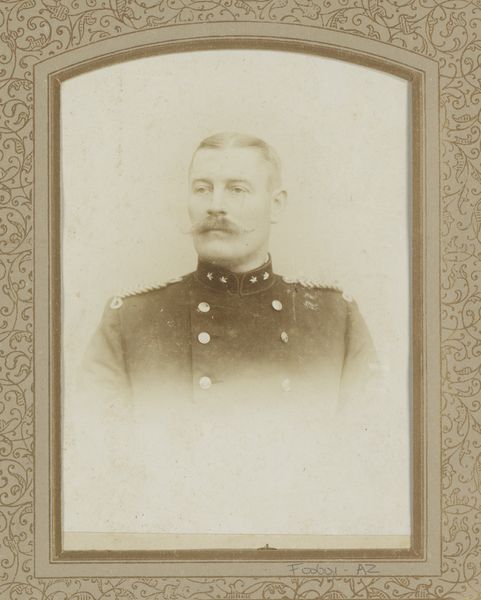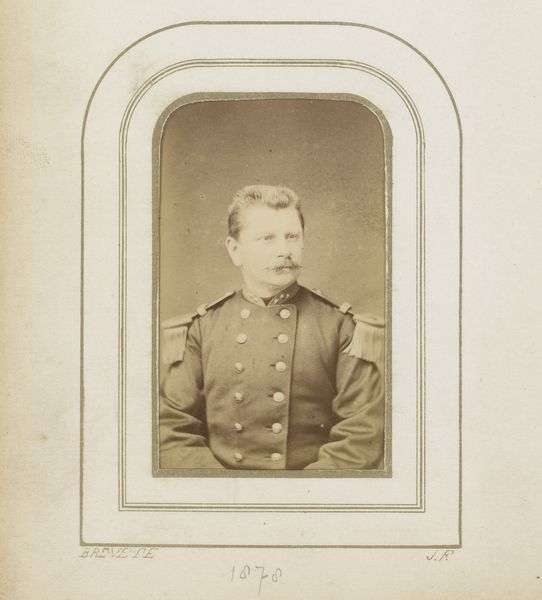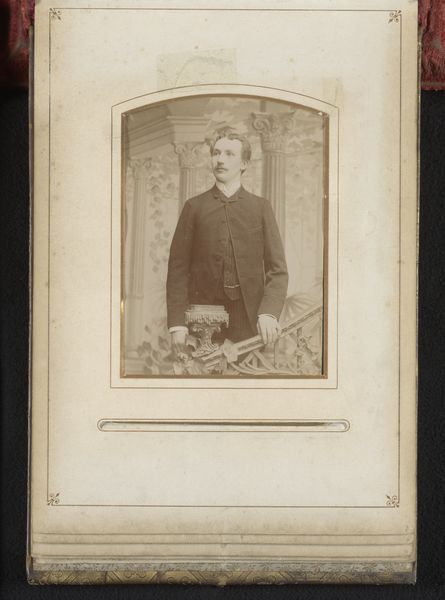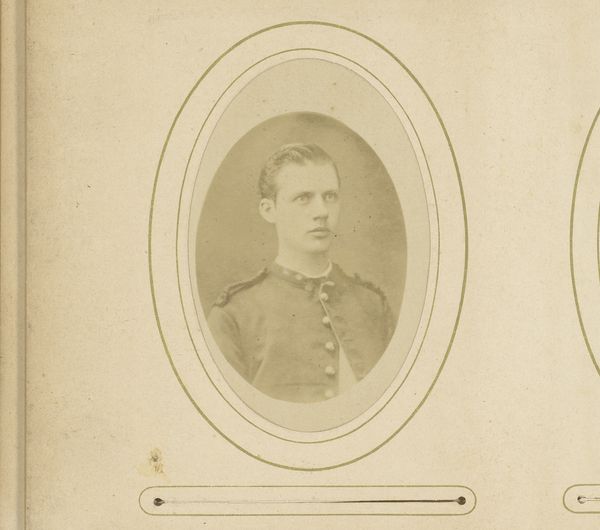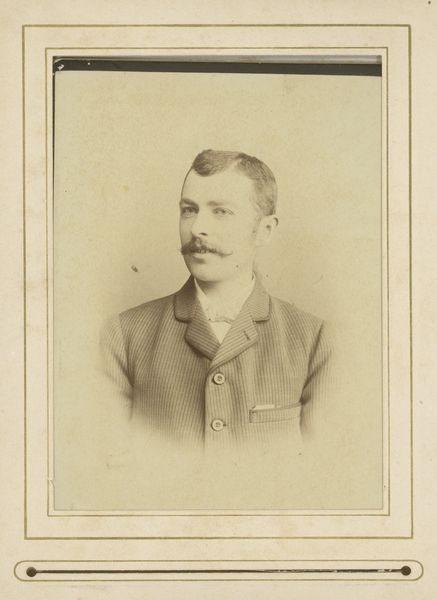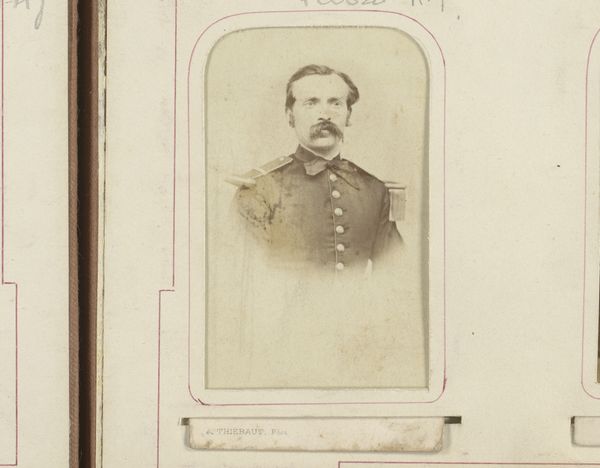
photography, gelatin-silver-print
#
portrait
#
charcoal drawing
#
photography
#
gelatin-silver-print
#
genre-painting
#
realism
Dimensions: height 138 mm, width 98 mm
Copyright: Rijks Museum: Open Domain
Curator: Looking at this gelatin silver print, titled "Portret van een man met snor"—or "Portrait of a Man with a Moustache"—dating from 1882 to 1887, I'm immediately struck by its subdued tonality. It feels very reserved. Editor: It has a stark elegance, doesn’t it? And to consider its existence as a photograph. A chemically manufactured object, produced en masse through advances in photographic technology during that period. What was its intended purpose? An assertion of status, perhaps? Curator: I think so. The sitter’s neatly trimmed mustache, the respectable suit; these are clearly deliberate visual cues. Beyond the sitter as an individual, there's something almost archetypal about the image, distilling Victorian ideals of masculinity. The oval frame, common to photographic portraits of the time, further cements that impression. Editor: Agreed. There’s labor involved in maintaining appearances. Someone spent time making the fabric, stitching the suit, pressing it for the photograph, even posing. This highlights that photography in that period becomes an industrialized object intended for social affirmation, which carries immense economic significance. Curator: Exactly, there is also a sense of vulnerability. A photographic portrait like this also says so much about legacy and remembrance, a man who seeks posterity but now survives only through his preserved image, with layers of memory added by each observer. Editor: Do you see that slight blemish on the photograph? Ironically, that imperfection only reinforces my appreciation of its physical reality, the manipulation of materials, the passing of time. Curator: I hadn't considered it, but the patina acts like a layer of varnish or sfumato, creating a timeless portrait of an individual or archetype with universal familiarity and remembrance. Editor: Precisely. Considering it as an object reveals how economic status could translate into visual markers through new material forms like photography. Fascinating how seemingly simple objects can unravel societal nuances when seen under a materialistic lens. Curator: Absolutely. It’s the quiet dignity of this portrait, combined with its specific details and the passing of eras, that keeps me thinking about those values of a specific generation. Editor: Indeed, understanding art within social and economic contexts provides for such enriching dialogues, allowing history and materialism to enhance meaning and perspective in even seemingly unassuming works.
Comments
No comments
Be the first to comment and join the conversation on the ultimate creative platform.
